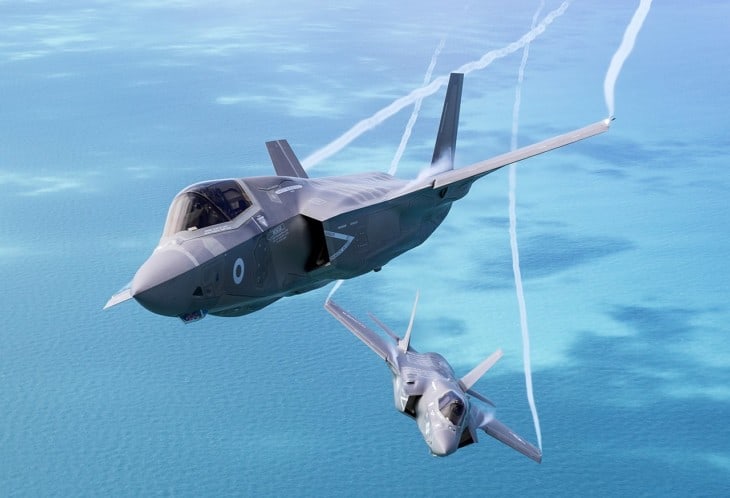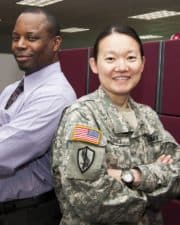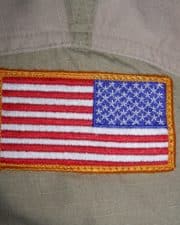There’s a lot of talk about which military branch is best for pilots. The United States Air Force, Army, Navy or Marines? Which one do you think is the best match for your personality and skill set? Do you want to fly jets like an F-18 Hornet or be a part of a more versatile helicopter squadron with rotary wing aircraft such as the CH-47 Chinook or AH-64 Apache Longbow helicopter? What if I told you that all four branches would provide you with these opportunities, and they’re all great in their own way?
Table of Contents
But it’s more or less impossible to pick any one military branch out as the “best for pilots.” There are pluses and minus to each one, and ultimately the one you sign up for is a personal choice made for a variety of reasons.
Military Pilot Jobs
If you’re thinking of becoming a pilot, there are two ways to accomplish it. You can join the military with your eyes set firmly on a pilot slot. This is an excellent option if you want to serve your country, and one of the best benefits is that the government might pay for your college and even your pilot training.
But, unfortunately, you aren’t the only one with this plan. Pilot slots in all branches are incredibly competitive. As a result, many folks sign up and then never get to fly.
That means that it’s essential to do your homework before you sign up. You want to carefully research which military branch is the easiest to become a pilot in. And you’ll also want to know which branch flies which types of aircraft.
The second way to become a pilot is through the civilian world, by paying for college and flight school out of your pocket. Of course, you’ll miss out on flying the flashy military hotrods, but your path towards an airline job is much more certain.
Military Aviation Careers Compared and Your Ultimate Goals
If you’re looking to join up with an eye on flying, you’ll want to consider what your long-term goals are. That’s a hard thing to do when you’re young, but having some sort of scheme in your back pocket can help you make better decisions going forward.
For pilots eyeing a military career, one of the most critical questions is whether or not you want to work for the airlines one day. Airline jobs are the ultimate career of the pilot world. While they may seem mundane or dull compared to flying fighter jets, airline captains bring home good money and work reasonably relaxed schedules—with a lot of personal freedom and time off.
If you want to transition to the airlines after your military commitment is fulfilled, you need to pursue a fixed-wing pilot job. That means you’ll want to avoid branches where most pilot slots are for helicopters or vertical lift. These times in your logbook will help you very little if your end goal is to fly fixed-wing airliners.

Another consideration for airline-bound pilots is their total flight time. Fighter jet pilots might have more fun, but their speedy craft seldom stays aloft very long. As a result, a fighter pilot will leave the service with fewer hours in their logbook and less instrument time compared to a cargo plane or transport pilot. Both of those things can hold you back when applying to airlines.
There are, of course, other pilot jobs out there besides the airlines. Cargo companies like FedEx and UPS love hiring military pilots, but the same caveats from above still apply.
If your passion is flying choppers, know that there are fewer rotor-wing civilian jobs to choose from. Helicopters are expensive to operate, so they are used only in a few specialized applications outside of the military. Think med-evac/air ambulance flights, sightseeing, and specialized charter operators like ferrying oil rig workers.

Military Branches Compared
There are many metrics that one can use to compare the various military branches. For the want-to-be pilot, the most important will likely be how likely it is you can land that coveted pilot slot.
But you can also compare them based on the types of aircraft they operate and the numbers of those aircraft. More aircraft means more pilot slots.
However, keep in mind that for every glamourous F-22 Raptor pilot slot, there are a dozen less noteworthy but still fun pilots jobs out there. Cargo planes, tankers, choppers, and VIP transport planes might not have the sex appeal, but they still mean that your office will fly at 30,000 feet.
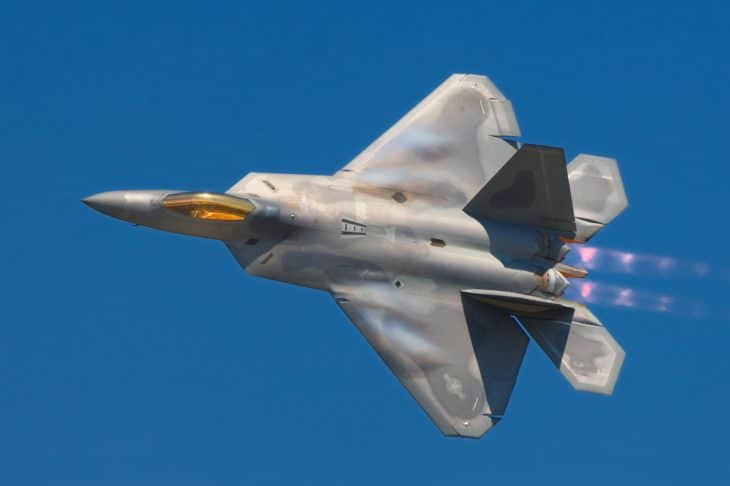
And then, of course, there are questions like, “Which branch has the best fighter pilots?” This is an entirely subjective metric, and everyone has their own opinions. We’ll leave that discussion to the armchair pilots out there and focus more on the quantifiable aspects of each branch’s aircraft and pilot slots.
Air Force
Of course, the Air Force is the first on most people’s minds when they think about piloting in the military. After all, the Air Force operated more than 5,000 crewed aircraft in 2020.
To be eligible for a pilot slot in the Air Force, you must possess a bachelor’s degree and have completed Officer Training School (OTS), Air Force Reserve Officer Training Corps (AFROTC), or attended the Air Force Academy. These requirements are almost identical to those found in all the other branches.
The Air Force operates an immense fleet of all sorts of aircraft from bases all over the world. Fighters include the F-22 Raptor, F-35 Lightning, F-15, and F-16 Falcon. Bombers include the B-1 Lancer and the stealth B-2 Spirit, plus the legacy B-52 Stratofortress.

The AF also flies electronic warfare aircraft like the Boeing AWACS and reconnaissance planes like the U-2. Then there are tankers and transports, like the C-5 Galaxy, Boeing C-17, C-130 Hercules, and KC-135.
The Air Force has a few rotor-wing aircraft, including a small fleet of V-22 Ospreys, Bell UH-1N Hueys, and Sikorsky HH-60s.
Finally, there are training aircraft that pilots will undoubtedly serve on. These include the T-6 Texan, T-38 Talon, and T-1 Jayhawk.
We won’t settle the Air Force versus Navy argument today, but suffice it to say that the Navy trains some of the best aviators in the world and flies some of the most advanced equipment. The Navy operates over 2,600 manned aircraft as of 2020.
Like the AF, the Navy pulls their pilot candidates from commissioned officers who have attended their academy at Westpoint. They’re then sent to primary flight training in Pensacola, Florida, and onward to advanced training.
The Navy’s aircraft operate from many land-based naval air stations and ships at sea. Here’s a look at just a few of the plane models the Navy operates.
The Navy flies a varied fleet of aircraft that is almost as diverse as the Air Force. Fighters include the F-35 and F/A-18 Hornet. Patrol and surveillance aircraft like the P-3 Orion and the Boeing P-8, along with the E-2 Hawkeye. Transports include the C-130 Hercules and C-2 Greyhound, plus the Boeing C-40 Clipper VIP transport aircraft.
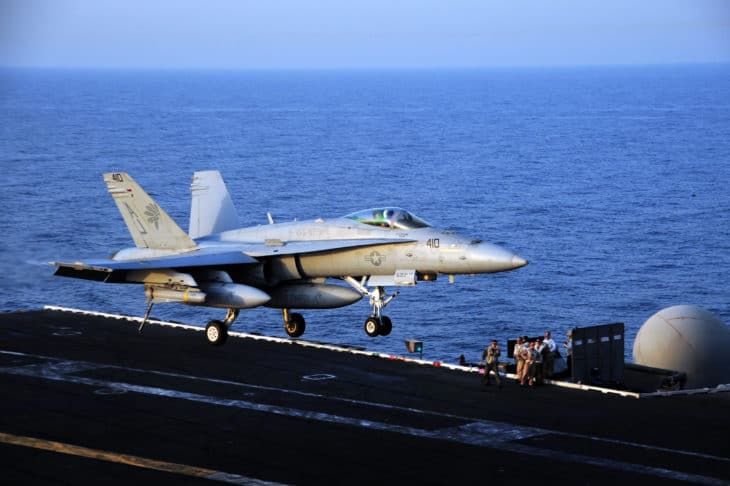
The Navy operates many more rotor-wing aircraft than the Air Force, making sense considering a chopper’s usefulness of landing on ships at sea. Their most common vessel is the SH-60 Seahawk, along with the older CH-53 Super Stallion.
Army
The Army operates one of the most varied air divisions in the armed services, as their multi-role and ground support operations must meet the needs of highly variable missions. As of 2020, they have over 4,400 manned aircraft in their fleet.
Their primary attack and support missions are made by helicopters, including the AH-64 Apache, CH-47 Chinook, and over 1,400 UH-60 Blackhawks.
Additionally, the Army flies various fixed-wings for transports and reconnaissance purposes. These include everything from Gulfstream and Bombardier jets and turboprops to a large fleet of UAV drones.
Marines
The Marines are a part of the Department of the Navy, so pilots in the Marines are flight officers trained by the Navy. The standard path starts that The Basic School, like all Marine commissions, then moves to basic flight training at Naval Air Station Pensacola in Florida.
The Marines operate an extensive fleet of aircraft, including fighters like the F-18 Hornets, AV-8 Harriers, and F-35 Lightnings. In addition, they also operate C-130 transports and KC-130 tankers. All in all, the Marines operate over 1,300 aircraft.

But most of the Marines’ fleet is made up of helicopters and the V-22 Osprey tilt-rotor aircraft. They operate Bell UH-1 Hueys and CH-53 Stallions, too.
Coast Guard
The US Coast Guard operates typically under the Department of Homeland Security and conducts law enforcement and maritime safety duties. However, traditionally and during times of war, the USCG operates under the Navy as America’s last line of defense.

The Coast Guard flies a fleet of mostly helicopters, including over 100 MH-65 Dolphins and MH-60 Jayhawks. They also fly a fixed-wing fleet of HC-130 Hercules, HC-27J Spartans, and HC-144 Ocean Sentries.
As a US sea-going service, aviators for the CG are trained at Naval Air Station Pensacola. The Coast Guard Aviation Training Center is located in Mobile, Alabama.
Another Option—The Reserves
Getting a pilot slot in any of the major armed services is statistically unlikely. Of course, some pilots will make the cut, but the process is more competitive than most people can imagine.
Most slots are filled with graduates of the military service academies, like the Air Force Academy or Westpoint. Just getting into those schools is competitive. There are other ways to get in, like the ROTC—but these are competitive and stressful avenues as well.
The National Guard and Reserve forces operate differently, and they also need pilots. These branches post their job openings online, and their hiring process is much more like a civilian job. You can apply for entry-level jobs at your local Reserve or Guard unit while still in high school, and then the unit will send you to OTS and UFT.
Do Airlines Prefer Military Pilots?
The short answer is no.
Airlines hire from two leading suppliers of pilots—the military and the civilian world.
The civilian path is made of pilots who trained from day one with their eyes on a civilian airline job. They paid for their flight school, and since then, they’ve been operating in the civilian aviation world. Their experiences and their logbooks are directly geared toward the end goal of getting an airline job.
Civilian pilots nearly always spend several years working as flight instructors to build hours. This job uniquely prepares pilots for the airline training environment and working conditions. Flight instructors are knowledgeable about civilian regulations and operating procedures. Most airlines love hiring good flight instructors.
Several types of military pilots may be at a disadvantage thanks to the airline hiring process. These include single-screw fighter jet pilots and helicopter pilots. But, on the other hand, fixed-wing military pilots often have more of the coveted turbine time logged than their civilian counterparts.
In the end, job applications to the airlines are based on meeting the minimum qualifications. That will include total flight time in the same category of aircraft and perhaps turbine experience.
References ▾
Related Posts
